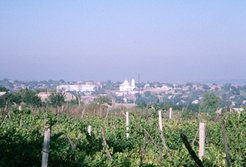Project 2: Comparing Rural Property Relations in Bulgaria and Ukraine
Project Summary

The main aim of this project is to examine different forms of property that have been under negotiation in the course of postsocialist reforms in Ukraine since 1991. A second dimension of the study is to compare the findings with Bulgaria , which was my first region of expertise and which I have maintained as a field site since the mid 1980s. A comparison of these two countries offers a means for understanding the development of reforms in the wider east European rural context.

The Ukrainian research involved setting up a new field site in a village in the southern most part of the Odessa oblast where I lived for a year. Aware of the importance of land reform issues in Bulgaria , I soon realised that land was only one resource under negotiation in the context of wide-sweeping reforms in Ukraine . Thus a number of differing forms of property constituted the focus of my research and are central concerns of the book I am presently completing.
In rural Ukraine - as in many other former USSR republics - land has been the foremost resource privatised. ‘Work’ and ‘land use’ have provided the basic criteria for distributing the land; providing the framework for the disestablishment of the kolkhoz and sovkhoz and the creation of at least four identifiable ways in which agricultural production is presently taking place. Firstly, most land is owned by ex-sovkhoz and kolhoz members (who have received a standard sized plot) and cultivated by successor cooperatives. Secondly, a number of informal groups, comprised of (ex-)social sphere employees (those that supported the agricultural collectives e.g. the teaching and medical professions) manage small tracts of land collectively. They are entitled to equally-sized plots, but these are significantly smaller than those conferred to ex-agricultural workers. Third, a small number of private farms have been established by ex-collective workers with experience in a wide variety of agricultural tasks (a rare quality in the socialist collective where occupations were usually specialised). Finally, as in Bulgaria , and indeed across eastern Europe, the vast majority of villagers maintain a household plot. Families have become increasingly dependent on produce from this plot in the context of a weakened state with shrinking resources, high unemployment and ever-increasing prices. Variation in how land is worked and owned in the Ukraine case, and the apparent lack of opposition to private farming – despite a strong community emphasis on social equality - can be attributed to a number of factors: the successful farmers do not flaunt their wealth through investment in luxurious lifestyles (big houses etc), indeed they share their success with the community through providing, for example, the school with free wheat for bread at school meals. In any case the majority of farmers do not own much more land than other villagers (since most is rented) and their success is generally viewed as well-deserved due to their hard work (see my coauthored chapter with Yalcin-Heckmann 2003).

